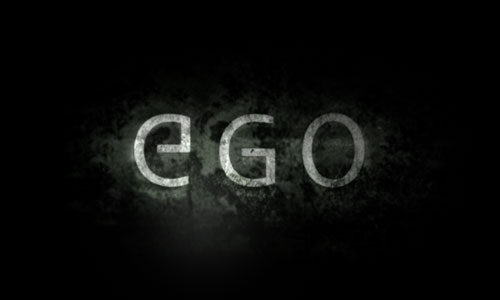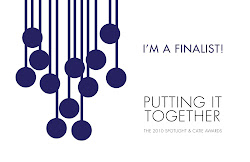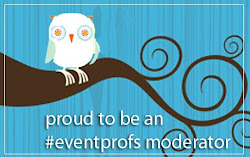
Folks, 2012, like the other 2,011 years that came before it, brings in a new year. New goals, new expectations, and most importantly new ideas. Thus, as we celebrate new beginnings, I’d like to introduce myself. My name is Ryan, I am 30 years old and I represent the next big thing in the event business. And that statement is only one quarter ego.
What I mean is that I am among the first forming the line of a new generation checking themselves in at the registration desk of the meeting and event industry. Now what are you going to do with us?
We represent some 76 million worker bees — with a trillion dollars at our disposal — who are just beginning to make our impact felt in the workforce. Over the next 10 years, we’ll significantly change the way work is being done in the office — and by extension, the way meetings and events will need to be held. In the coming years, you will see us infiltrate meetings in growing numbers and, for the most part, we have no interest in sitting in ballrooms, classroom style, listening to your talking heads.
Gone are coming the days of the CEO’s “State of the State” while a passive audience watches. Even if that CEO presentation is done by holograph or takes place in Second Life. Because Gen Y is a group conditioned to participate! From birth we have been raised in a media-saturated environment, constantly bombarded and entertained while parents, teachers and coaches successively booked our calendars with teamwork, homework and activities both interactive and independent. Beyond the, we are the tech-literate generation; a population better conditioned to multitask than any other. The result: creatures adept at and working toward trying to build the best “life experience” for ourselves. The other result – we feel entitled to share our opinions, we want to sit at the board table with tell the CEO, we want constant feedback, we want to be on the ‘team’ and we want to do it however and whenever we want.
Why does any of this matter to meeting and event planners? It matters because Gen Y-ers will not feel bad about walking out of your next program if they do not feel personally engaged. The greatest coming struggle I think for planners will be around engagement. If planners do not create programs which engage and empower our generation, we will most likely walk away from the program because we will find it not worth our time. That may sound harsher than I intend, but we are a generation for whom work is not intended to be our life, just one part. And if that part is unenergizing, uneducational, or just plain boring, we will find something else that is.

What I am not advocating here is the pair of traps I feel planners sometimes step into when trying to address the issue of engaging this audience. I am not talking in this piece about meetings and events which will become downgraded to what I like to call edu-tainment First on edu-tainment – I believe there is an assumption that the MTV2 generation means they need to be entertained in order to educate them. But entertainment is not engagement. Do you need to gain our attention? Yes. But we really are smarter than we appear on television. Proper engagement means creating events to meet our generation where they are at as you plan programs for them. Work towards their strengths. Create opportunities for team work. Allow us to brainstorm and voice our thoughts with leaders who can implement those ideas. Create opportunities to learn based on visuals and hands on exploratory experiences. Create connection opportunities with the greater global society so that we may embrace a diversity of ideas and people.
Second, I am not advocating that technology is the solution to engaging this generation. While we were raised online, technology and its toys are not in themselves the solution to make us more engaged in meetings - though they may be tools. Often I feel planners consider jumping on the bandwagon of the next emerging technology and implementing its application into their meetings and events because it is cool, hip, interesting, or trendy rather than because it facilitates the function of the program. The assumption seems to be if we give a tech tech-savvy 20 something a PDA to play with, an RFID tag which geo-positions him and his friends at the event or hold the meeting in Second Life, somehow she will be engaged (maybe you mean entertained.) The danger I fret is that we loose the real jewel of our programs – the face to face interaction of people with one another. It is not that I am against technology – live texting, for example, is one of the most interesting installations in events I have seen lately. It is that never want to see a planner or a program stray away from its purpose or plan for the sake of a tech gadget. I personally gain far more from sitting in a boardroom with fellow creatives and a flip chart than I do out of the flashiest PowerPoint presentation.
So what is planner to do? In my opinion, the battle cry of Gen Y is “experience” and “opportunity.” While that first word is not new to our industry, least we not forget it when we think about the second. Meetings and events in my opinion are evolving creatures which in the coming years may push beyond the group experience of today into completely personalized opportunities. Future learning may take not one, but several forms. For the same material and meetings and events will need to serve a vast diversity of populations and desires not in one place but in many. A program on social responsibility may take the form of a group of creatives sitting in a boardroom in New York conceptualizing solutions, while tactile learners simultaneously visit a factory in China. Still, others may head online into a global classroom for a year long discussion on all facets of the topic, while their colleague in the cube next door plays a virtual video game with a built-in learning module. This is about delivering content in the format of choice for the attendee, not the attendee adapting to the delivery of the content.
Many I know think that as a generation we are entitled, and while there is always truth in every perception, I wish to caution that blanket assumption. It is not entirely ego that leads us to such a belief, but rather that we grew up learning in environments which worked to our strengths and where we constantly received positive feedback, giving us a very high perception of our own value and abilities. We really do have the idea that we know things, that we have the right to ask questions and to challenge, and that people should listen to our ideas. We are a generation adept at flexibility, tapped into creative thinking, able to navigate and process vast amounts of information while tapping into a larger diversity of resources and ideas quickly, all the while honestly believing we can make a difference.

That, in short is the greatest asset of Generation Y as I know it. We are a group of experience-driven individuals who see themselves as capable of changing the world. We believe in our potential with an optimism that really can cause change. Harnessing this talent is, I believe, the challenge before the meeting industry as our events morph to meet this new attendee profile. It will mean getting out of the comfortable ballroom and into engaging environments which foster innovation and conversation. It will demand that we intermix the generations and embrace diversity in everything from how work is done to where and how the meeting is held to help find solutions for the betterment of organizations and society alike.
And so, if I or any of my cohorts end up your next dinner meeting, just seat us next to the CEO. I am certain we will have a few ideas to share.
Photo References:
http://www.commentsyard.com/cy/01/6874/happy-new-year-graphics-09.jpg
http://blogging4jobs.com/wp-content/uploads/2010/06/geny.jpg
http://www.thesocialleader.com/wp-content/uploads/2011/07/ego.jpg
















